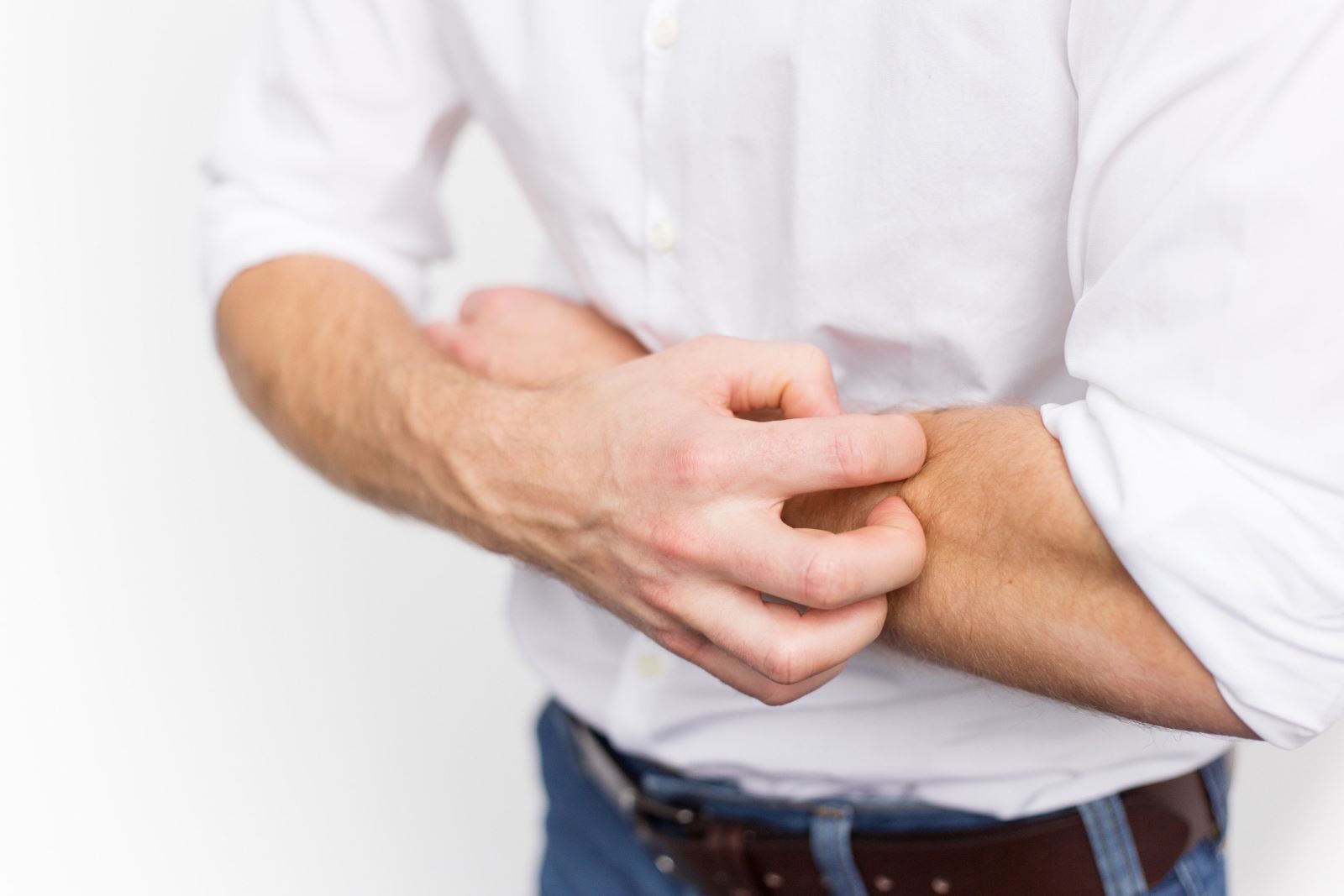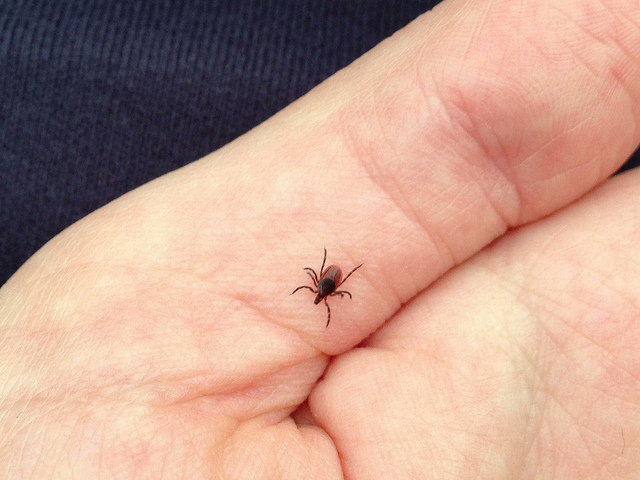What is a rash?
 |
Sometimes the reason may be obvious (like a rash caused by poison ivy) while other times it can be really hard to put your finger on the root cause.
Rashes can be caused by an allergen or food irritant, clothing or household chemicals. Medications, poor digestion, or illness may also cause rashes or hives.
Some rashes come out of nowhere while others take several days to form on your skin. How long does it take for a rash to go away? Well, it depends on a few factors including what type of rash it is and how quickly the inflammation can be reduced. Some will go away as quickly as they appeared while others may linger for longer periods of time.
What Is a Rash? + Signs and Symptoms
A skin rash is a change of the skin which affects its color, appearance, and/or texture. A rash can also be defined as an area of irritated or swollen skin. A fancier, medical word for a rash is dermatitis. An itchy rash is called allergic contact dermatitis.
Rashes can occur all over the body. Sometimes they are very localized while other times they are widespread. There is a wide variety of symptoms and characteristics of skin rashes including:
Red or discolored skin
Raised, red welts
Red or discolored blotches
Red or discolored bumps
Ring shaped
Blisters
Itchiness
A lacy and slightly raised patch of skin
Oozing sores that become crusty
Pus-filled, crusty swellings
Scaly or flaky skin patch
Thick and leathery skin patch
Types of Rashes
Saying you have a rash is not an exact medical diagnosis. Rather, it’s just a way of describing the skin inflammation and discoloration you are currently experiencing. You know that your skin does not look like it normally does, something is off and you may or may not know the true medical reason behind the rash.
There are many types of rashes that can better explain and pinpoint the cause of the change in your skin’s appearance. For example, some of the most common rashes include:
Atopic dermatitis
Contact dermatitis
Seborrheic dermatitis (dandruff)
Diaper Rash
Poison Ivy
Eczema
Chickenpox
Measles
Heat rash
Stress rash
Rosacea
Hives
Sun rash
Before we get to how to get rid of a rash naturally, let’s look at the common causes and risk factors of a rash. The type of rash can also explain the cause of the rash. For example, if you have a stress rash, then the cause is stress, and a poison ivy rash is caused by poison ivy.
Causes and Risk Factors
In general, rashes are caused by skin inflammation which in turn can have many causes. One of the most common forms of a rash is contact dermatitis, which occurs when a substance of some sort irritates the skin. Contact dermatitis may cause mild redness of the skin or a rash of small red bumps. A more severe reaction may cause swelling, redness and larger blisters.
Common causes of contact dermatitis and its resulting rash include:
Poison ivy or poison oak
Soaps, detergents, shampoos, deodorants, perfumes and lotions, especially ones with danger synthetic scents
Household chemicals like bleach
Hand sanitizers
Latex allergy
Food allergies
Other common causes of rashes:
Viral infection (like herpes zoster)
Fungal infection
Bacterial infection
Parasitic infection (like scabies)
Acne
Eczema
Psoriasis
Rosacea
Lyme disease (commonly causes a “bull’s eye” rash)
Lupus (commonly causes a “butterfly” rash underneath the eyes and across the cheeks)
Bug bites
Bee stings
Excessive skin rubbing/friction
Prolonged exposure to heat (heat rash)
Prolonged exposure to moisture (diaper rash)
An allergy to a medication
A side effect or photosensitivity to a medication

|
When it comes to rash risk factors, having a viral, bacterial, fungal or parasitic infection all put you at greater risk for developing a rash. Also, a family or personal history of allergies or asthma raises your rash risk. Since rashes are commonly the result of contact with poison ivy, poison sumac, and poison oak or from insect bites then it’s not surprising that people who spend more time outdoors have a higher risk of developing a rash.
Precautions
If you have a rash that lasts longer than a few days with no explanation or is getting progressively worse, it’s a good idea to see your doctor.
You should also seek immediate medical attention if you experience any additional symptoms such as:
Difficulty breathing
Fever
Tightness or itchiness in the throat
Increasing pain or discoloration in the rash area
Swelling of the face or extremities
Confusion
Dizziness
Severe head or neck pain
Repeated vomiting or diarrhea
Contact your doctor if you have a rash as well as a sore throat, joint pain, a recent tick bite, a recent animal bite or red streaks/tender areas near the rash.
There are so many varieties of rashes, but they all involve inflammation and irritation of your skin. Thankfully, there are many tried and true natural ways to make that rash a problem of the past quickly and easily. Remember that your diet plays a big part in helping to improve a rash as does what you put on your skin on a regular basis.
Top Foods to Reduce Rashes
Organic foods
Orange and yellow fruits and vegetables
Clean lean protein
Flax and chia seeds
Cold-pressed oils
Recommended
 Handbook
Handbook
Vietnam Moves Up 8 Places In World Happiness Index
 Handbook
Handbook
Travelling Vietnam Through French Artist's Children Book
 Multimedia
Multimedia
Vietnamese Turmeric Fish among Best Asian Dishes: TasteAtlas
 Handbook
Handbook
From Lost to Found: German Tourist Thanks Vietnamese Police for Returning His Bag
Popular article
 Handbook
Handbook
Prediction and Resolution for the Disasters of Humanity
 Handbook
Handbook
16 French Films To Be Shown For Free During Tet Holiday In Vietnam
 Handbook
Handbook
Unique Cultural and Religious Activities to Welcome Year of the Snake
 Handbook
Handbook



